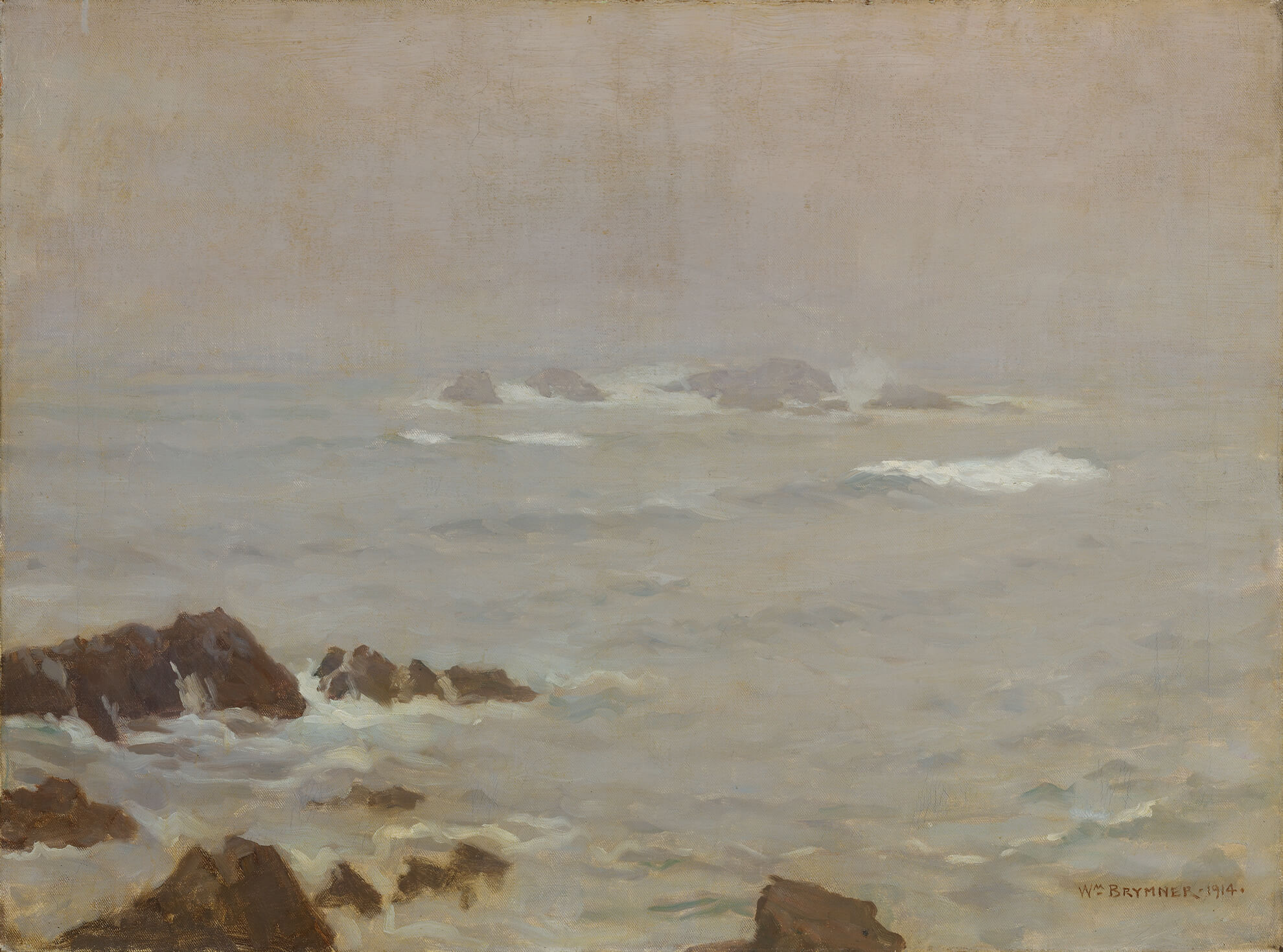The Coast at Louisbourg 1914

William Brymner, The Coast at Louisbourg, 1914
Oil on canvas, 53.5 x 71.2 cm
National Gallery of Canada, Ottawa
The Coast at Louisbourg is a seascape, an ocean view in Cape Breton. The subject is straightforward—waves topple toward a rocky coastline, and a small boat is visible on the horizon—but the painting’s colouring is striking. Blue, grey, and mauve tints in the water create harmony with the soft grey sky, while the creamy whites of the foam and spray of the waves are balanced by the clouds. Brymner’s seascapes were admired as formal compositions and they were widely exhibited, but the Louisbourg seascapes are particularly meaningful because they were exhibited during the First World War and critics connected them with Canada’s war effort.

Brymner began painting in Louisbourg in 1909. It is unlikely that he was attempting to emulate a specific style, but he did admire European artists who worked en plein air and he may have begun this painting outdoors. In a letter to his family, he reported, “I am down here painting the rocks & sea about the old fortifications and enjoy it, but would like it better if it did not rain so much, or get foggy.” He returned to Louisbourg at least twice more, and several paintings survive from these expeditions. Among the works are small oil sketches and large paintings, including The Coast at Louisbourg, Fog on the Coast, and Incoming Tide, Louisburg, all 1914. Other works from this period, such as Sunset, Louisburg, N.S., 1916, are known through their reproductions.
The Coast at Louisbourg was widely exhibited and reproduced in Brymner’s lifetime. In 1915 it was displayed at the Art Association of Montreal, the Canadian Art Club, and the Royal Canadian Academy of Arts; in 1921 it was shown again at the AAM and at the Winnipeg Art Gallery. It was reproduced in Studio magazine in 1915 and the Canadian Magazine of Politics, Science, Art and Literature in 1917. Fog on the Coast was not reproduced, but it too was included in several exhibitions. These paintings were key to Brymner’s reputation in his later years, when he was president of the RCA.
At the time critics noted that the works Brymner exhibited in 1915 “were completed before the military authorities decided that one of Mr. Brymner’s favourite sketching places would make [a] good site for rifle targets.” Brymner too viewed the subject as a lost possibility, telling Eric Brown that “I’d like to go back to Louisburg but am afraid the Soldiers guarding the Marconi Station their [sic] will make the place impossible. Damn the War” [emphasis Brymner’s]. Exhibited at a time when the war and its terrible costs were dominating Canadian news, Brymner’s greyish views of the coast and the distant horizon were no longer simply harmonious formal landscapes—they were melancholic and patriotic evocations.

 About the Author
About the Author
 More Online Art Books
More Online Art Books
 Acknowledgements
Acknowledgements